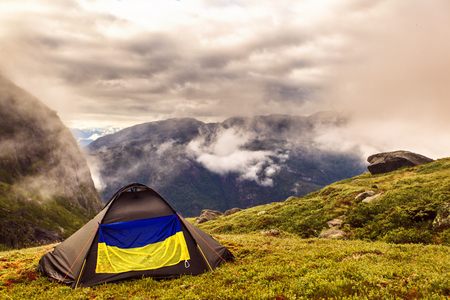1. Introduction to Sleeping Bag Temperature Ratings
Understanding sleeping bag temperature ratings is essential for anyone venturing into the great British outdoors. These ratings provide a benchmark for the lowest temperatures at which a sleeping bag will keep an average sleeper comfortable. In Britain, where weather conditions can be notoriously unpredictable — ranging from mild and damp summers to chilly, blustery nights even in spring or autumn — choosing the right sleeping bag becomes all the more crucial. Whether you are planning a wild camp in the Lake District, a festival weekend in Somerset, or a family camping trip in Wales, knowing how these ratings translate to real-world comfort helps ensure your nights are warm and restful. This introductory overview will explore what temperature ratings mean, why they matter for UK-based adventures, and how this knowledge supports safer, more enjoyable outdoor experiences.
2. Decoding EN and ISO Standards
When choosing a sleeping bag for British conditions, understanding the standards behind temperature ratings is crucial. The two most important benchmarks are the European EN 13537 and the international ISO 23537 standards. Both were developed to provide consistent, reliable information about how warm a sleeping bag will keep you under specific conditions—vital knowledge given Britain’s famously unpredictable weather.
EN 13537 was introduced by the European Committee for Standardization to offer a uniform approach to sleeping bag temperature ratings. In recent years, this has been superseded by ISO 23537, which is essentially an updated version adopted globally, including across the UK. These standards require that sleeping bags undergo rigorous laboratory testing using a heated mannequin dressed in base layers, simulating real-world use.
The results are three key temperature ratings:
| Rating | Description | Typical Use in Britain |
|---|---|---|
| Comfort | The temperature at which an average woman can expect to sleep comfortably. | Useful for spring and autumn camping or anyone who feels the cold easily. |
| Limit (Lower Limit) | The lowest temperature at which an average man can sleep without feeling cold. | Relevant for three-season use or cool summer nights in the UK. |
| Extreme | The minimum temperature for survival; risk of hypothermia is present. | Not recommended as a guide for comfort—more a measure of absolute emergency. |
For British campers, it’s essential to focus on the Comfort and Limit ratings rather than Extreme. The damp and windy conditions common throughout the UK can make nights feel colder than expected. By relying on these standardised measures, you can choose a sleeping bag that genuinely matches your needs, whether you’re wild camping in Snowdonia or pitching up at a Lake District campsite.
![]()
3. Recognising British Weather Realities
If you have ever spent a night camping in Britain, you’ll know that our weather has a reputation for being unpredictable. Unlike regions with more stable climates, the UK can swing from mild evenings to chilly, damp nights – even in summer. This variability is driven by maritime influences, frequent changes in air masses, and sudden rain showers that can drop temperatures unexpectedly. As a result, overnight lows often differ from the day’s forecast, particularly in exposed areas such as the Lake District or Scottish Highlands. These realities mean that relying solely on a sleeping bag’s stated temperature rating may not be enough. Instead, it’s vital to account for wind chill, ground moisture, and humidity – all of which can make a seemingly adequate sleeping bag feel much colder than anticipated. In practical terms, this means choosing a sleeping bag with a lower comfort rating than you think you’ll need, or layering up with liners and thermal clothing to bridge the gap when British weather does its usual thing.
4. Choosing the Right Sleeping Bag Rating for the UK
Selecting a sleeping bag suitable for British conditions involves more than simply picking one off the shelf. The UKs climate is famously unpredictable, with temperatures and weather shifting dramatically between regions and seasons. Here’s how to match your sleeping bag rating to typical UK scenarios, factoring in where you’ll camp, the time of year, and your own comfort preferences.
Understanding Seasonal Needs
In the UK, the camping season can be loosely divided into three categories: summer (June–August), shoulder seasons (spring and autumn), and winter (December–February). Here’s a quick guide to temperature ratings that generally work for each:
| Season | Typical Low Temperatures (°C) | Recommended EN/ISO Comfort Rating |
|---|---|---|
| Summer | 8–15°C | 5°C or above |
| Spring/Autumn | 0–8°C | -1°C to 5°C |
| Winter | -5–0°C (or lower in Scotland) | -5°C or lower |
Campsite Location Matters
Your choice will also depend heavily on where in Britain you’re pitching up. Coastal areas are typically milder but can be damp and windy, while upland and northern areas—think Lake District, Scottish Highlands, or Snowdonia—are much colder, especially at night. Always check local forecasts before heading out and consider opting for a slightly warmer bag if you’re camping at altitude or in exposed locations.
Personal Comfort Factors
Everyone sleeps differently. If you tend to feel cold at night, it’s wise to choose a bag rated 5–10°C lower than the lowest temperature you expect. Conversely, if you sleep warm or plan to use a high-quality insulated mat, you might be comfortable with a lighter bag. Remember that sleeping gear (mats, liners) and clothing layers add significant warmth.
Quick Reference Table: Matching Ratings to Your Trip
| Camping Scenario | Minimum Comfort Rating Suggested | Notes |
|---|---|---|
| Campsite in Cornwall (summer) | +5°C | Mild nights but watch out for rain/wind chill |
| Lakes or Peaks (autumn) | -1°C | Add margin for elevation/cold snaps |
| Wild camping in Highlands (winter) | -10°C or lower | Essential for safety and comfort in harsh conditions |
| Festival camping (any season) | +5°C to 0°C | Packed tents retain some warmth but expect surprises! |
Tuning Your Choice: A Practical Approach
If in doubt, err on the side of caution—a slightly warmer bag is almost always preferable. You can always unzip a bag if you get too hot, but there’s little comfort if you’re shivering through the night. Take time to read actual user reviews from those camping in Britain rather than relying solely on manufacturer specs designed for continental climates. This practical approach ensures your kit genuinely works where you need it most.
5. Practical Tips for Staying Warm
Even the best-rated sleeping bag can struggle in British conditions if not used wisely. Here are some practical ways to maximise warmth during your nights outdoors, tailored for our famously unpredictable weather:
Layer Up Wisely
One of the simplest ways to boost your sleeping bag’s performance is effective layering. Don’t just rely on a thick pair of socks; consider wearing thermal base layers and a hat, as a significant amount of heat escapes from your head. Avoid bulky or damp clothing inside the bag, which can reduce insulation effectiveness.
Add a Sleeping Bag Liner
Liners are an excellent investment for UK campers. A good quality liner (fleece or silk, depending on your needs) can add several degrees of warmth and also helps keep your sleeping bag clean. They’re particularly handy during longer trips or festivals where washing facilities are limited.
Choose Your Sleeping Mat Carefully
The ground in Britain often retains cold and moisture, especially in spring and autumn. Using an insulated mat or even doubling up with a foam roll underneath can make a noticeable difference by preventing heat loss to the ground—a crucial factor many overlook.
Manage Moisture Diligently
British humidity and condensation can sap warmth quickly. Always air out your sleeping bag when possible and pack it away dry to maintain its insulating properties. If camping for multiple days, try to dry both your bag and liner each morning, even if it’s just for half an hour between rain showers.
Other Handy Tips
Eat a warm meal before bed to fuel your metabolism; avoid alcohol as it lowers core temperature. Make sure your tent is properly ventilated but not drafty. Finally, resist the urge to burrow entirely into your sleeping bag—trapped breath can create dampness that cools you down overnight.
6. Common Pitfalls and Real-Life Experiences
It’s all too easy to make mistakes when choosing a sleeping bag for British conditions, especially if you’re new to camping or influenced by marketing jargon. One of the most common pitfalls is relying solely on the lowest temperature rating printed on the bag. Many assume that a bag rated to -5°C will keep them warm at that temperature, but in reality, this rating often refers to the absolute survival limit rather than comfort. In Britain, where the weather can swing from mild to damp and chilly even in summer, local campers stress the importance of prioritising the comfort rating over the extreme rating.
Another frequent misstep is underestimating how much moisture and humidity affect warmth. UK nights are rarely bone-dry; persistent drizzle, dew, and mist can sap heat quickly, especially in poorly ventilated tents or bivvy bags. Campers who have braved Dartmoor or the Lake District recount waking up cold and clammy despite seemingly adequate kit, highlighting that a sleeping bag’s insulation performance can drop significantly when damp. Synthetic fill bags often outperform down in these conditions unless you’re diligent with waterproof stuff sacks and liners.
Weight obsession is another trap. Inspired by ultralight hiking trends, some opt for minimalist sleeping bags that perform admirably on paper but fall short during an unexpected cold snap or when campsite facilities are basic. Seasoned UK hikers advise balancing pack weight with realistic expectations about night-time lows—especially in shoulder seasons or upland areas where frost is not uncommon even in late spring or early autumn.
Local hikers also point out that personal factors—such as whether you run hot or cold, your metabolism, and what you wear to bed—are easily overlooked. Stories abound of campers shivering through a May bank holiday because they wore only shorts and a t-shirt inside their bag, assuming British “summer” would be forgiving. Layering up with thermals or using a liner can make a surprising difference without needing to invest in a bulkier bag.
The consensus among experienced UK outdoor enthusiasts is clear: do your homework, try before you buy if possible, and don’t be afraid to ask others about their real-world experiences. Forums and hiking groups are full of candid advice on what actually works in places like Snowdonia or the Highlands. Ultimately, choosing the right sleeping bag for Britain means understanding both the science behind temperature ratings and the unpredictable nature of British weather.


